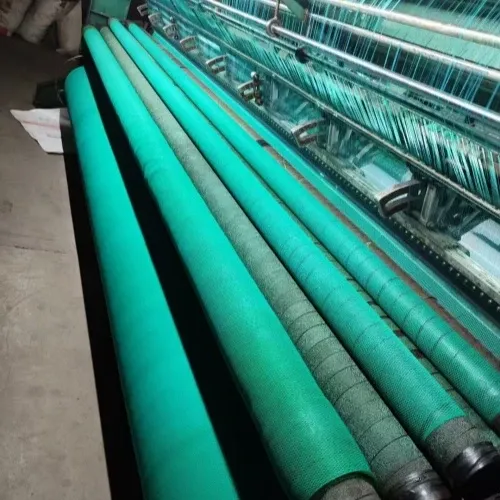-
 アフリカ人
アフリカ人 -
 アルバニア語
アルバニア語 -
 アムハラ語
アムハラ語 -
 アラビア語
アラビア語 -
 アルメニア語
アルメニア語 -
 アゼルバイジャン語
アゼルバイジャン語 -
 バスク語
バスク語 -
 ベラルーシ語
ベラルーシ語 -
 ベンガル語
ベンガル語 -
 ボスニア語
ボスニア語 -
 ブルガリア語
ブルガリア語 -
 カタロニア語
カタロニア語 -
 セブアノ語
セブアノ語 -
 中国
中国 -
 コルシカ
コルシカ -
 クロアチア語
クロアチア語 -
 チェコ語
チェコ語 -
 デンマーク語
デンマーク語 -
 オランダの
オランダの -
 英語
英語 -
 エスペラント
エスペラント -
 エストニア語
エストニア語 -
 フィンランド語
フィンランド語 -
 フランス語
フランス語 -
 フリジア語
フリジア語 -
 ガリシア語
ガリシア語 -
 ジョージア語
ジョージア語 -
 ドイツ人
ドイツ人 -
 ギリシャ語
ギリシャ語 -
 グジャラート語
グジャラート語 -
 ハイチ語
ハイチ語 -
 ハウサ語
ハウサ語 -
 ハワイアン
ハワイアン -
 ヘブライ語
ヘブライ語 -
 いいえ
いいえ -
 ミャオ族
ミャオ族 -
 ハンガリー語
ハンガリー語 -
 アイスランド語
アイスランド語 -
 イボ語
イボ語 -
 インドネシア語
インドネシア語 -
 アイルランド人
アイルランド人 -
 イタリアの
イタリアの -
 日本語
日本語 -
 ジャワ語
ジャワ語 -
 カンナダ語
カンナダ語 -
 カザフ語
カザフ語 -
 クメール語
クメール語 -
 ルワンダ語
ルワンダ語 -
 韓国語
韓国語 -
 クルド
クルド -
 キルギス語
キルギス語 -
 結核
結核 -
 ラテン
ラテン -
 ラトビア語
ラトビア語 -
 リトアニア語
リトアニア語 -
 ルクセンブルク語
ルクセンブルク語 -
 マケドニアの
マケドニアの -
 マルガシ
マルガシ -
 マレー語
マレー語 -
 マラヤーラム語
マラヤーラム語 -
 マルタ語
マルタ語 -
 マオリ語
マオリ語 -
 マラーティー語
マラーティー語 -
 モンゴル語
モンゴル語 -
 ミャンマー
ミャンマー -
 ネパール語
ネパール語 -
 ノルウェー語
ノルウェー語 -
 ノルウェー語
ノルウェー語 -
 オック語
オック語 -
 パシュトゥー語
パシュトゥー語 -
 ペルシャ語
ペルシャ語 -
 研磨
研磨 -
 ポルトガル語
ポルトガル語 -
 パンジャブ語
パンジャブ語 -
 ルーマニア語
ルーマニア語 -
 ロシア
ロシア -
 サモア語
サモア語 -
 スコットランド・ゲール語
スコットランド・ゲール語 -
 セルビア語
セルビア語 -
 英語
英語 -
 ショナ語
ショナ語 -
 シンディー語
シンディー語 -
 シンハラ語
シンハラ語 -
 スロバキア語
スロバキア語 -
 スロベニア語
スロベニア語 -
 ソマリ語
ソマリ語 -
 スペイン語
スペイン語 -
 スンダ人
スンダ人 -
 スワヒリ語
スワヒリ語 -
 スウェーデンの
スウェーデンの -
 タガログ語
タガログ語 -
 タジク語
タジク語 -
 タミル語
タミル語 -
 タタール語
タタール語 -
 テルグ語
テルグ語 -
 タイ語
タイ語 -
 トルコ語
トルコ語 -
 トルクメン語
トルクメン語 -
 ウクライナ語
ウクライナ語 -
 ウルドゥー語
ウルドゥー語 -
 ウイグル
ウイグル -
 ウズベク語
ウズベク語 -
 ベトナム語
ベトナム語 -
 ウェールズ語
ウェールズ語 -
 ヘルプ
ヘルプ -
 イディッシュ語
イディッシュ語 -
 ヨルバ語
ヨルバ語 -
 ズールー語
ズールー語
Hail Net: The "Protector" In Agricultural Production
Hail disaster is one of the natural disasters, and its harm to agricultural production can not be underestimated. Especially in the context of increasingly serious climate change, the frequency and intensity of hail may increase, which will bring huge losses to crops. In order to meet this challenge, ひょう防止ネット came into being. As a physical protection means, ハイネット has gradually become an indispensable protection equipment in agriculture. It can not only effectively prevent hail from causing direct damage to crops, but also improve the growing environment of crops and enhance the disaster resistance of farmland.

The Working Principle of Anti Hail Net
The working principle of ひょう防止ネット is to disperse and alleviate the impact of hail through grid structure, so that the speed and intensity of hail can be effectively slowed down before it comes into contact with crops. The ひょう防止ネット with this structure often makes the hail disperse into smaller pieces or fall at a lower speed after hitting the net surface, thus reducing the direct damage to crops.
Specifically, the working principle of ひょう防止ネット is mainly reflected in the following aspects:
Slow down the hail speed: when the hail passes through the mesh of the 雹よけネット, its speed will be slowed down due to the resistance generated by the net surface. This reduces the energy when the hail hits the crops, thus avoiding the crops from being greatly impacted.
Disperse the impact force: When the hail hits the ハイネット, the grid structure will disperse the impact force of the hail to a wider area, reducing the direct damage of a single hail particle to crops.
Improve the strength and anti-beating ability: the ハイネット is made of high-strength materials, which has good tensile strength and toughness, can withstand extreme weather such as strong winds and heavy rains, and can also resist the impact of hail for a long time.
Does not affect the light and ventilation: The mesh design of the hail protection net has been carefully optimized, which can not only effectively prevent the impact of hail, but also ensure enough sunlight to irradiate crops and ensure the normal growth of crops. In addition, the air permeability of the ハイネット can also effectively avoid crop diseases caused by high temperature and humidity.
Advantages and Disadvantages of Anti Hail Net
利点:
Effective protection against hail: Hail net can effectively slow down the impact of hail on crops and prevent fruits and plants from being damaged.
Increase crop yield: By reducing the loss caused by hail, the ハイネット can improve crop yield and quality.
Improve the growing environment: the installation of ハイネット can adjust the temperature and humidity of farmland and improve the growing environment of crops.
Reduce the use of pesticides: the ハイネット can reduce the damage to crops, reduce the dependence on pesticides, and help to produce green agricultural products.
Reduce economic losses: effectively reduce economic losses caused by hail disasters and protect farmers' interests.
Insufficient:
High initial investment: the initial installation cost of ひょう防止ネット is high, especially
Especially in large-scale farmland, it may increase certain financial pressure. 2. Maintenance cost: The ハイネット needs regular inspection and maintenance to ensure the long-term effectiveness of its function, which increases the extra manpower and material costs. 3. Limitation: Hail net has no protective effect on other extreme weather (such as storm and drought), and other measures are still needed to cooperate with it. 4. Affect ventilation and illumination: Although the design of ひょう防止ネット takes into account light transmittance and ventilation, under some conditions, too dense mesh may affect crop photosynthesis.
-
The Sunshade Net Can Block Ultraviolet RaysニュースAug.11,2025
-
Main Application and Technology of Nylon ScreenニュースAug.11,2025
-
Green Anti UV Sunshade Net: The Perfect Combination of Ecological Friendliness and Practical PerformanceニュースAug.11,2025
-
Explore the Sunshade NetニュースAug.11,2025
-
Application and Development of Nylon Screen in Fuel Processing and TreatmentニュースAug.11,2025
-
Application and Advantages of Nylon Screen for AquacultureニュースAug.11,2025











